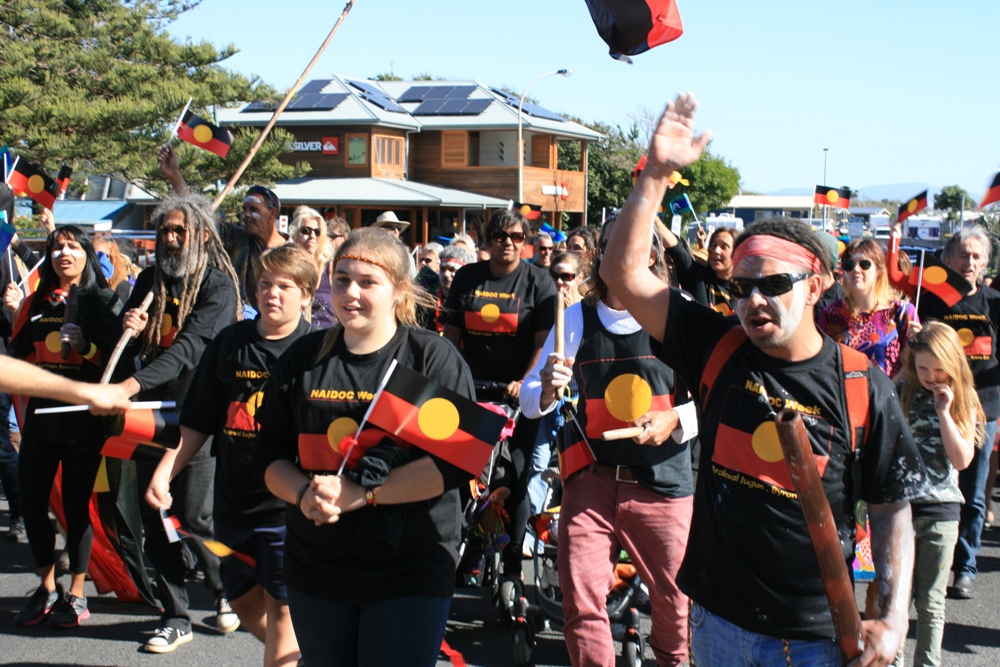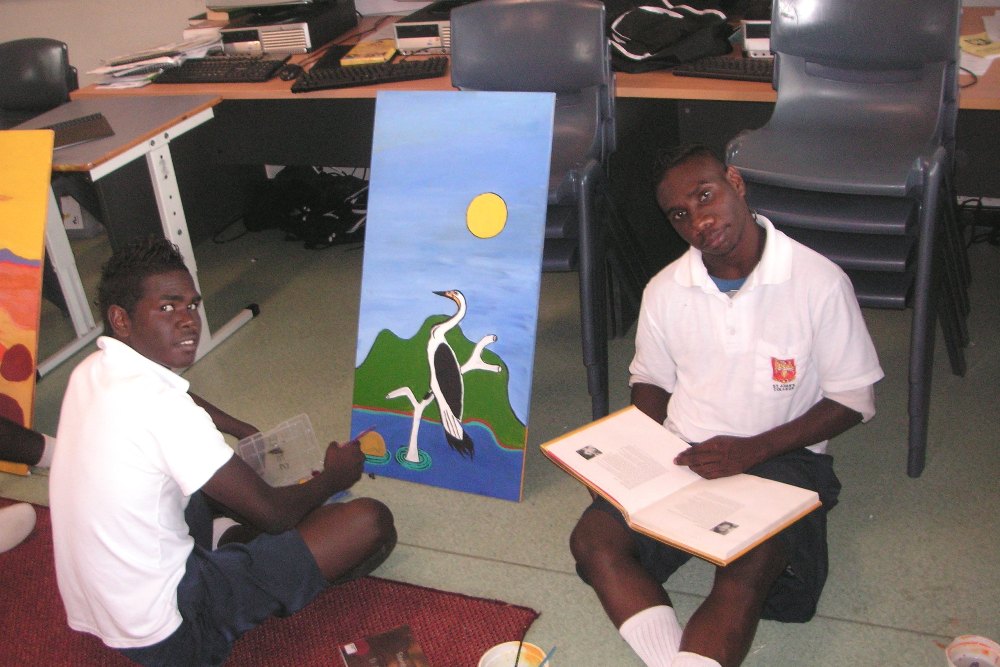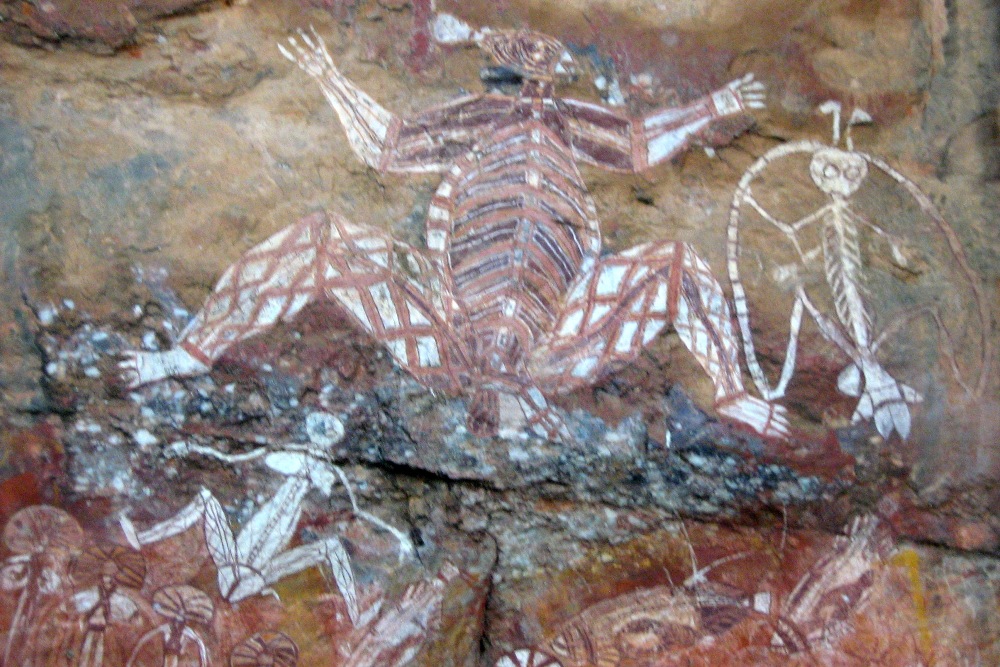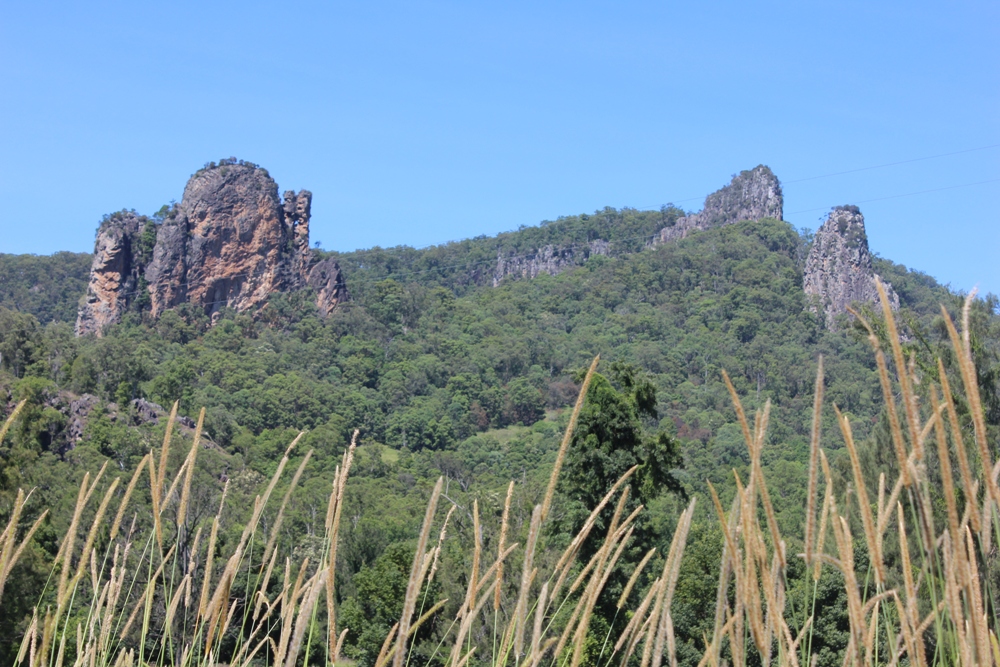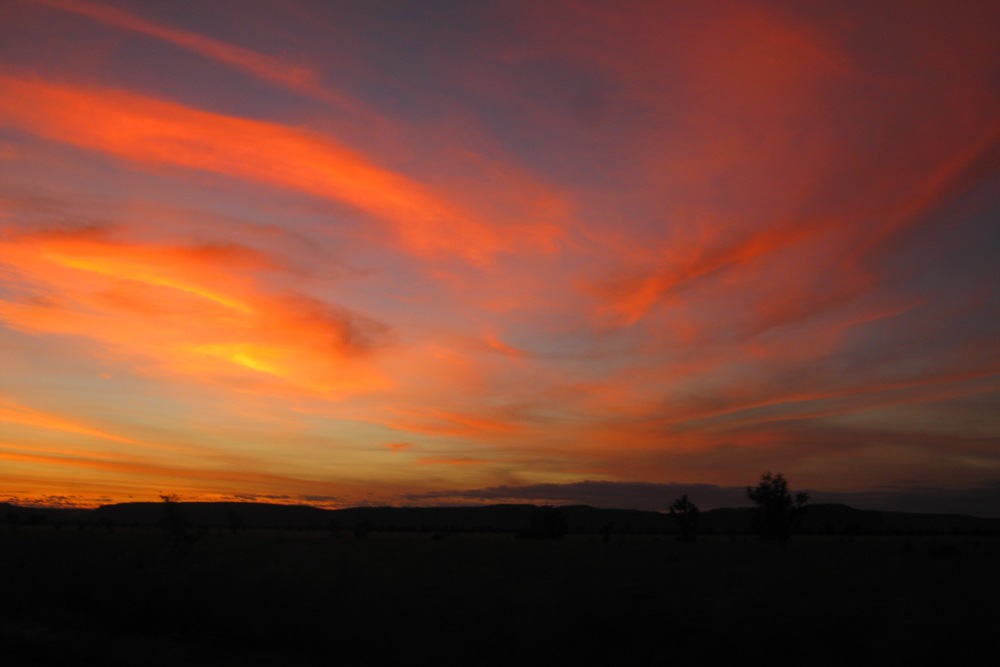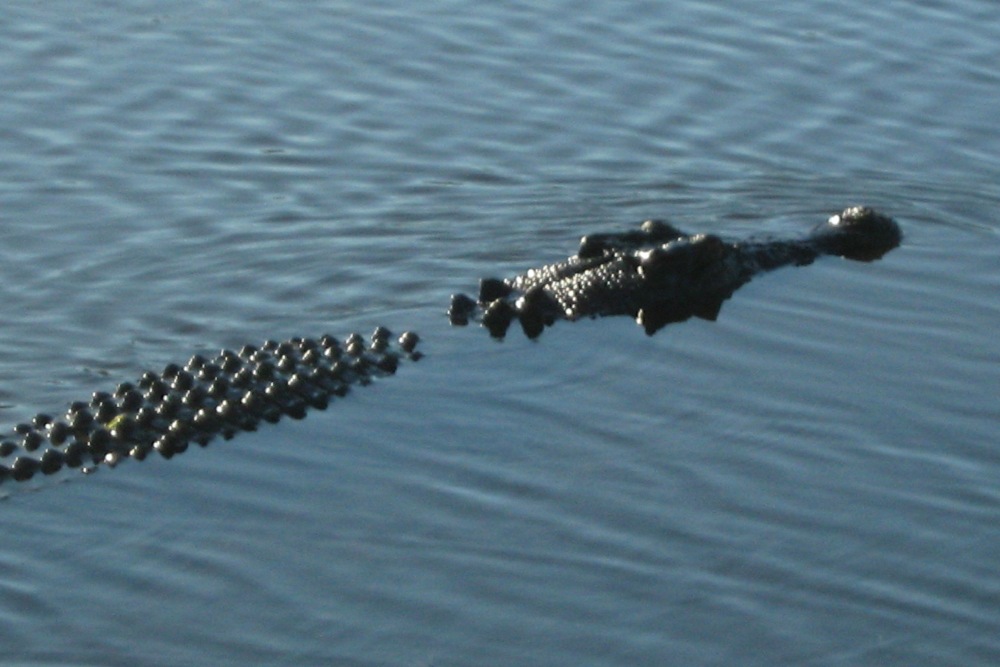 July sees the beginning of NAIDOC Week, though many schools and community organisations start celebrating during the last week of the school term. This year the NAIDOC theme is SONGLINES. I am excited by this as I know many Australians will now be learning what a Songline actually entails.
July sees the beginning of NAIDOC Week, though many schools and community organisations start celebrating during the last week of the school term. This year the NAIDOC theme is SONGLINES. I am excited by this as I know many Australians will now be learning what a Songline actually entails.
The term SONGLINE means the continuation of a song through time related to a journey across ones country. Not only is it a navigational tool, it also allows an individual or group to connect to the Dreaming through the landforms designed and built by the Creation Spirits. Thus, landforms and natural landscape features are incorporated into the rhythm of the song; the flow of the land dictates the sound of the story, which can also be used during longer voyages. By singing the story of the land you can also show your respect to the ancestors as you pass through their lands. These songs are passed down through generations within traditional stories, in song and dance, and while painting. The night sky can also be charted by song in the same way.
‘Walkabout’ is a loosely termed phrase in modern society. Aboriginal people didn’t just walk about aimlessly; they had ceremonial and social responsibilities within their clan. Where their land boundaries ended, another language group or nation started, and the entry onto their lands may well have proved dangerous. Walkabout included ceremonial initiation responsibilities, for example, Men’s Ceremony, where young men walked within the landscape in time with the spirits, learning about ones self. Land boundaries also restricted business operations. The trade routes saw the journey of a resource from its original source to an area where an individual felt the need to stop walking, and then the swapping of goods occurred at a safe point. From then on, trade items such as spear tips, ochre, shells or plant materials, travelled on through unknown, or at least restricted lands. Any journey, especially trips to visit family in other regions, or with message stick in toe to corroborees and ceremonies, would have seen the Songlines in full swing.
The term ‘Skin’ is almost unheard of here along the east coast. I have to explain this concept to many. Skin is your relationship to your kinship/moity; it’s your genetic responsibility to your clan. You must marry within the correct blood line. You have a Skin name provided to you at birth, or during the moment of conception, a name which can also relate back to the Dreamtime. For example, the Yolngu of NE Arnhem Land of Dhuwa Moity can marry those of Yirritja Moiety. In simple terms, the white cockatoo people can marry the black cockatoo people. Through these marriage systems one can find privileges such as walking onto country perhaps a no go zone to others, allowing an individual to harvest bush tucker in season on their mother-in-law’s land. Some areas within ‘country’ are forbidden, such as sacred ritual sites, burial places- or Secrete Men’s and Women’s Business sites. The Dreaming totems of the Dreamtime provide protection within the clan, while serving one with conservation responsibilities to inturn protect the totem species.
Yep, I’m a whitefella; collectively my family have notched up over 100 years in service within Indigenous Education. My Dreaming is Garrawi, a Cronulla-Dharawal/ Tharawal name for cockatoo. I was named by a Murri elder on Bundjalung land. I have worked with more than 70 tribal groups within Australia, and though I don’t have Skin, I am connected to Bundjalung, Tiwi, Jawoyn, Yolngu, Arrernte, Pitjantjatjara, various Kimberley mob, along with my continuing friendship with my childhood Eora and Dharawal/Tharawal friends.
So, what purpose do the Songlines hold today? I work in a high school in the Northern Rivers. NAIDOC kept me very busy this year as we held an all day event. It was well worth it, as kids of every colour relished the moment. On the day a parent of four of my Bundjalung students approached me and stated how she knew very little about the Songlines, and was very glad it was being spoken about. I explained how even though my students in Darwin were from communities from across northern Australia, and the central desert, they too rarely mentioned it. Don’t get me wrong we spoke about Dreaming spirituality a lot and it was part of the lesson. My students also explained their Dreaming to visiting Japanese, Irish and Sydney high school students via the cultural workshops I held in downtown Darwin. When I went bush with my students, my Yolngu cohort would sing in the rain on a broiling savanna afternoon. In the homelands the Songlines are still relevant, but racing along a whitefella strip of bitumen- off country, at 130km an hour, how would you keep up with the narrative anyway, right! It’s more about respect. Remembering the old ways and giving breath to them.
Here in the Northern Rivers, there are those within the indigenous community who behold a rich cultural knowledge, and we work closely with them. We began our Bundjalung language in schools program on NAIDOC day as a yarning circle, where locally authorised-cultural protocol allowed Bundjalung students to speak the words aloud to the school community- with the support of the school’s enigmatic language teacher. We had local indigenous singers, non-indigenous students spoke about what Bundjalung culture meant to them, a Bundjalung elder spoke boldly, we had interesting Bundjalung basket weaving sessions with a talented Bundjalung leader, yummy bush tucker, and alongside passionate staff- I ran a Songlines ‘Storytelling through Art’ activity. I won’t apologise to the cabin-fever rednecks or the conservative 2D-Right for playing my part with the facilitation of Indigenous spirituality within the curriculum. In the Top End I worked with culture and spiritualty, while in the same moment job training students, allowing folk to walk between two worlds. But where does this fit into the pragmatics of an urbanised east coast agenda, the Shamanic north coast included? Well, by giving an ancient culture the light of day, singing it loud and proud- while sharing it with a society approaching an eagerness to better understand, it promotes identity and an “I’m interesting after all”- self esteem- to enter into the adult globalised economy, while fuelling our children in being able to make a healthy, honest quid from the vibrant, local cultural knowledge they have become the guardians of.
SONGLINES- whispering the magic of the past where the Dreaming remains forever.
